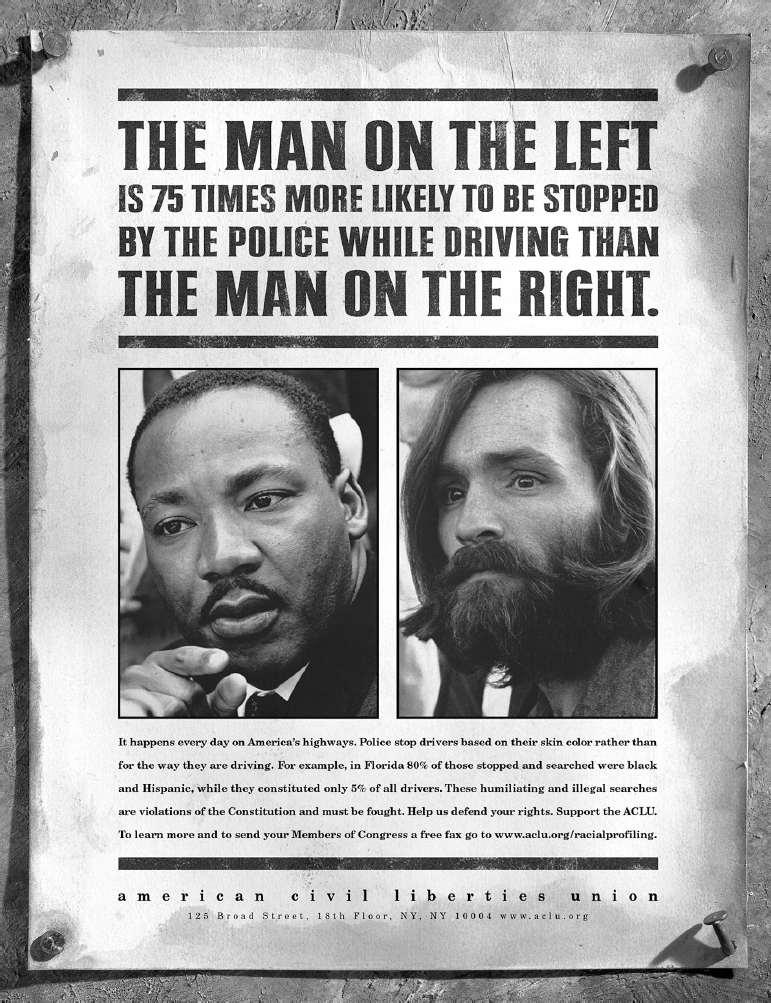Images and Pathos
You can often appeal to pathos by using striking imagery in your writing, so it’s no surprise that images often serve the same purpose. A striking photograph, for example, may lend an emotional component that greatly strengthens an argument. Advertisers certainly make the most of photos and other visual images to entice or persuade audiences. In the accompanying example, which appeared in both the New York Times and the New Yorker magazine in 2000, the American Civil Liberties Union (ACLU) makes a dramatic assertion, an appeal to pathos through both visual images and written text, as a call to support its organization. According to its mission statement, the ACLU seeks “to defend and preserve the individual rights and liberties that the Constitution and laws of the United States guarantee everyone in this country.”
The headline below the pictures reads:
It happens every day on America’s highways. Police stop drivers based on their skin color rather than for the way they are driving. For example, in Florida 80% of those stopped and searched were black and Hispanic, while they constituted only 5% of all drivers. These humiliating and illegal searches are violations of the Constitution and must be fought. Help us defend your rights. Support the ACLU.
The advertisement does not name the two men pictured, assuming the audience will recognize revered civil rights leader Martin Luther King Jr. on the left and convicted serial killer Charles Manson on the right. The headline at the top is an assertion that is bound to evoke a visceral response. The written text below the photos makes a series of logical appeals by pointing out that racial profiling accounts for the police stopping drivers on the basis of their race, and by offering statistical evidence from the state of Florida. The main appeal, however, is to pathos through the juxtaposition of a hero with a madman presented in a form reminiscent of a “wanted” poster.
